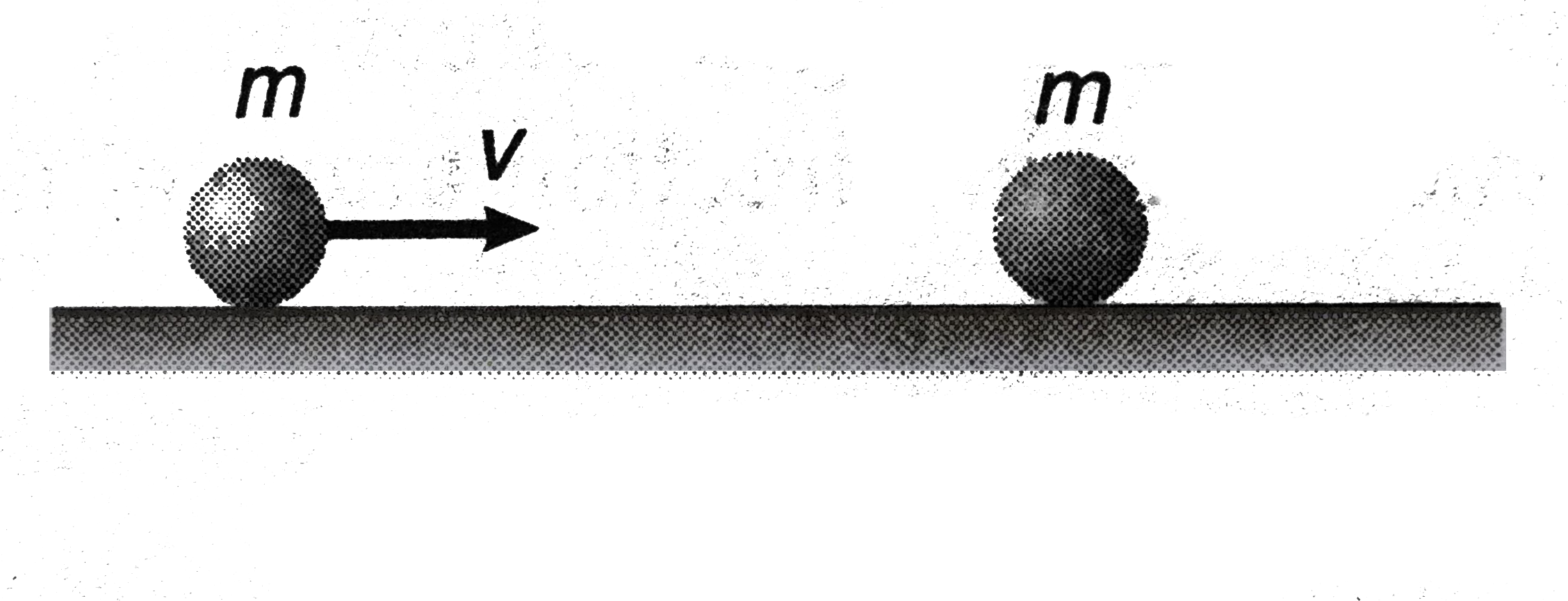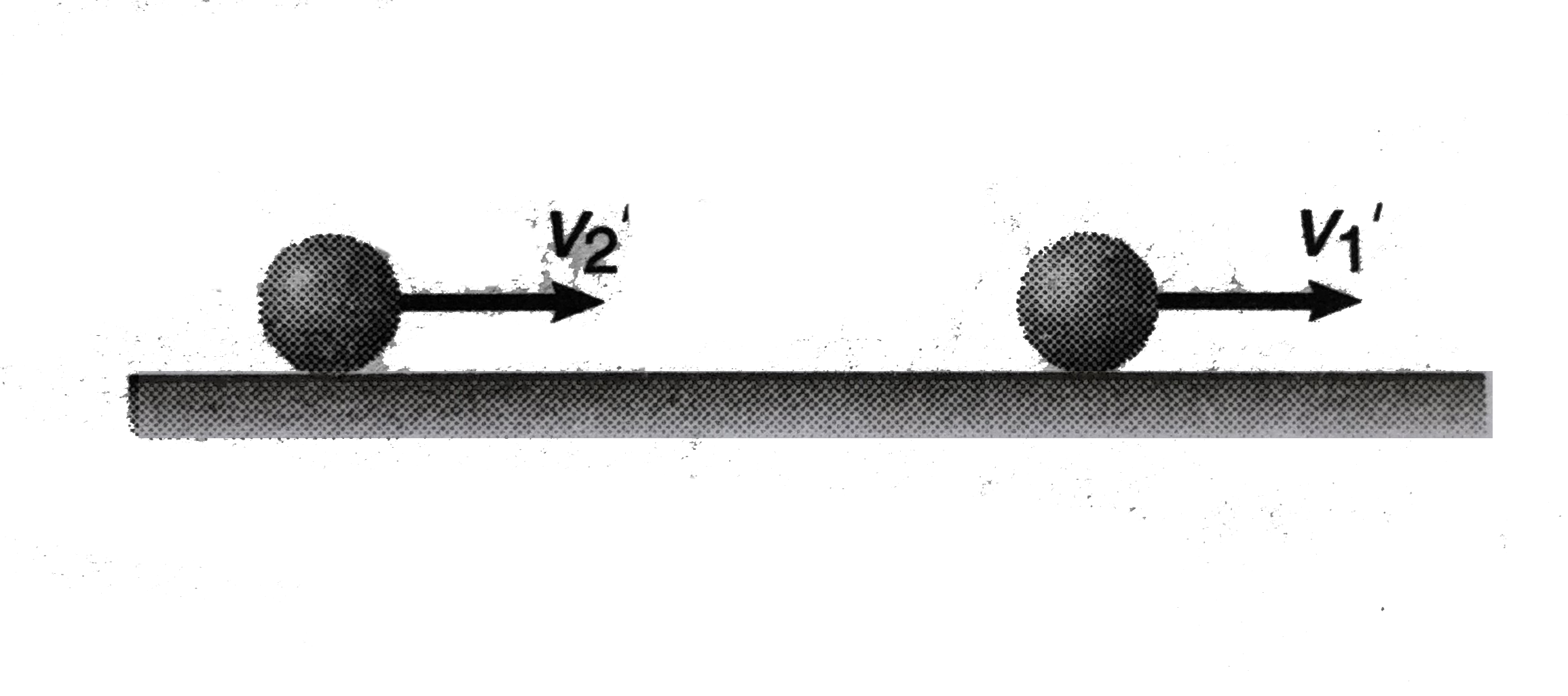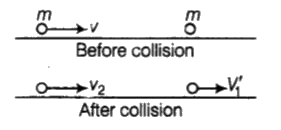Two identical balls each of mass m moving on straight track approaching towards each other with same speed. Find kinetic energy of the two ball system is equal to the total energy loss during collision E is the total kinetic energy of the balls before collision and E' is after collision and coefficient of restitution is e. Then choose the correct options.
EE'=2
e=12
e=1√2
EE'=√2
The correct Answer is:A, C

E=mu2
ΔE=12(m2)(2u)2(1−e2)=mu2(1−e2)
E'=E=ΔE=mu2(1−1+e2)=mu2e2
since E'=ΔE
mu2e2=mu2(1−e2)
e2=1−e2⇒e2=12⇒e=1√2
and EE'=1e2=2
Topper's Solved these Questions
- DAILY PRACTICE PROBLEMBOOK - RESONANCECHAPTER - DAILY PRACTICE PROBLEMEXERCISE - DPP No.68
9 Videos
- DAILY PRACTICE PROBLEMBOOK - RESONANCECHAPTER - DAILY PRACTICE PROBLEMEXERCISE - DPP No.69
20 Videos
- DAILY PRACTICE PROBLEMBOOK - RESONANCECHAPTER - DAILY PRACTICE PROBLEMEXERCISE - DPP No.66
20 Videos
- CURRENT ELECTRICITYBOOK - RESONANCECHAPTER - CURRENT ELECTRICITYEXERCISE - High Level Problems (HIP)
21 Videos
- ELECTRO MAGNETIC WAVESBOOK - RESONANCECHAPTER - ELECTRO MAGNETIC WAVESEXERCISE - Exercise 3
27 Videos
Similar Questions
A ball of mass m moving at speed v makes a head on collision with an identical ball at rest. The kinetic energy of the balls after the collision is 3/4th of the original. Find the coefficient of restitution.
View SolutionA ball of mass m moving at a speed v makes a head on inelastic collision with an identical ball at rest. The kinetic energy of the balls after the collision is 34th of the original. Find the coefficient of restitution.


View Solution
Knowledge Check
A ball strickes a horizontal floor at 45∘.25% of its kinetic energy is lost in collision. Find the coefficient of restitution.
A12B1√2C12√2D14Choose the most appropriate option.
A ball of mass m moving at a speed v makes a head on collision with an identical ball at rest. The kinetic energy at the balls after the collision is 3/4th of the original. What is the coefficient of restitution?
 A1/√3B1/√2C√2D√3
A1/√3B1/√2C√2D√3A clay ball of mass m and speed v strikes another metal ball. of same mass m, which is at rest. They stick together after collision. The kinetic energy of the system after collision is –
Amv2/2Bmv2/4C2mv2Dmv2
A ball of mass m moving at a speed v makes a head on inelastic collision with an identical ball at rest. The kinetic energy of the balls after the collision is 34th of the original. Find the coefficient of restitution.


View SolutionA ball of mass m moving at a speed v makes a head-on collision with an identical ball at rest. The kinetic energy of the balls after the collision is three fourths of the original. Find the coefficient of restitution.
View SolutionOn a frictionless surface, a ball of mass m moving at a speed v makes a head on collision with an identical ball at rest. The kinetic energy of the balls after the collision is 3/4th of the original. Find the coefficient of restitution.
View SolutionIn an elastic collision of two billiard balls, is the total kinetic energy conserved during the short time of collision of the ball (i.e when they are in contact)?
View SolutionTwo balls A and B. are of the sme size but the mass of A is double that of B. they move along the sme line in opposite direction. A with velocity 2μ and B with velocity 3μ If their total kinetoc energy after collision is half their total kinetic energy before collision find the coefficient of restitution. Find also their velocities after collision.
View Solution
